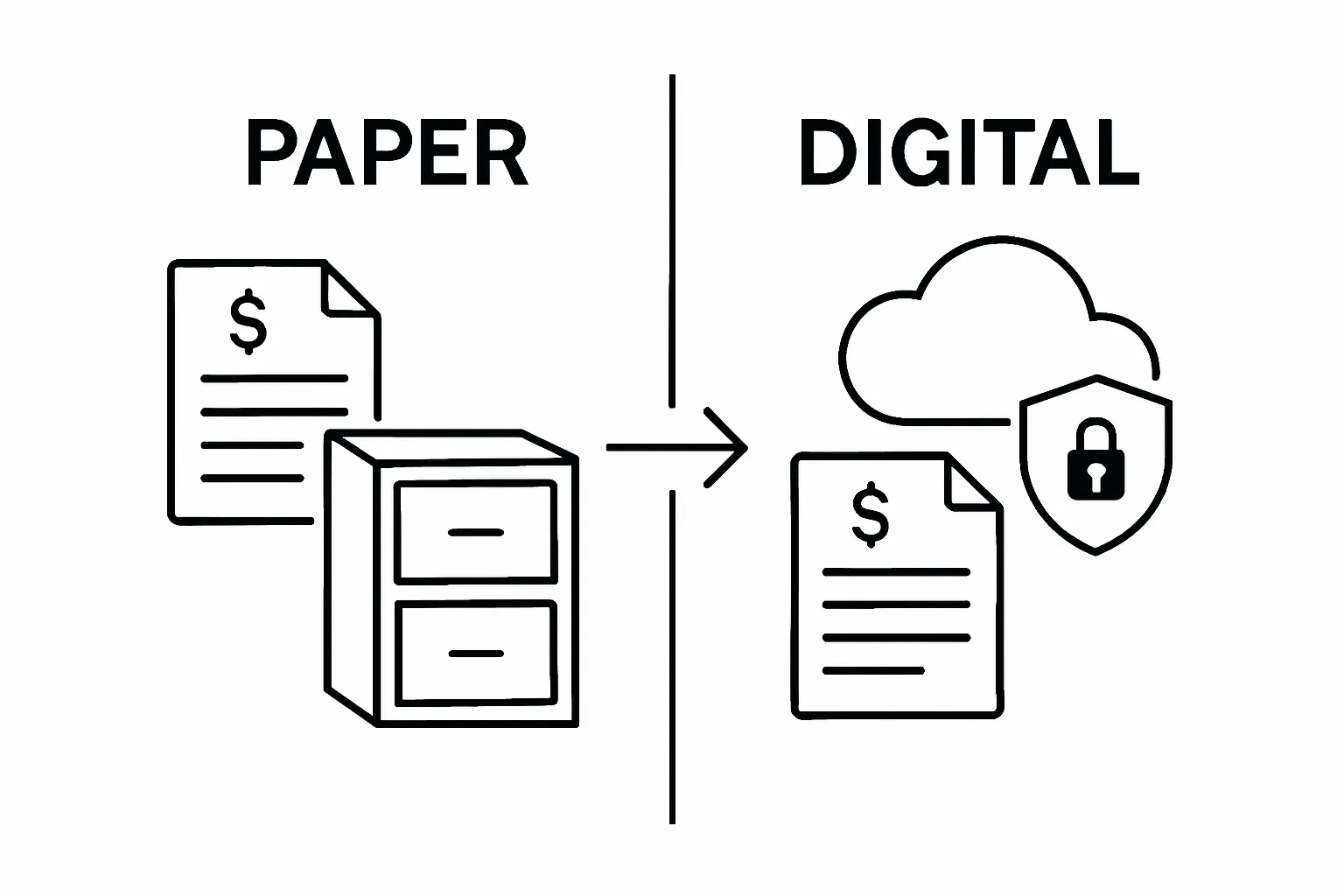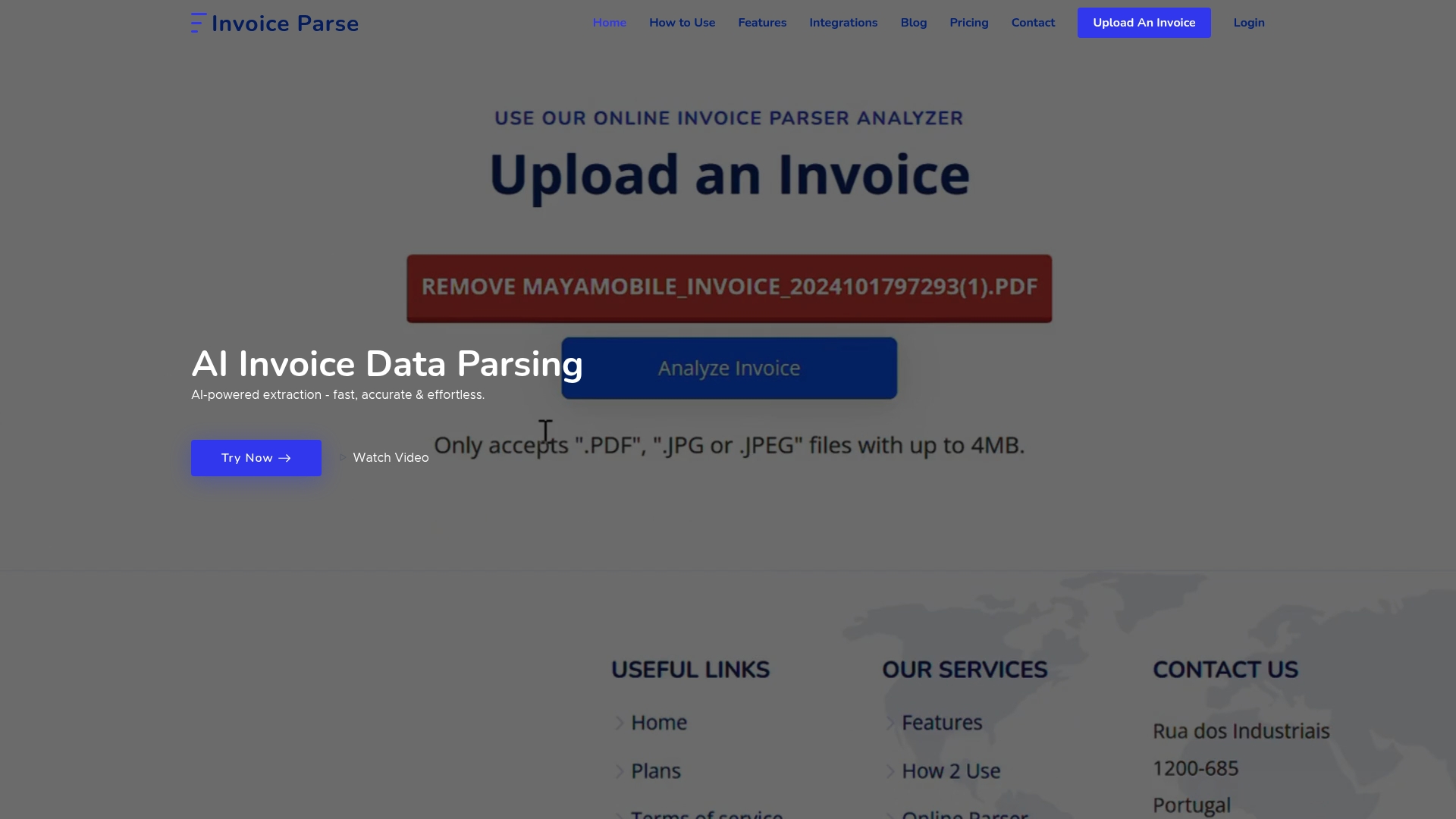Businesses handle thousands of financial documents each year, from invoices to tax records and contracts. Here is the surprise. McKinsey reports that advanced AI can cut document processing time by up to 70 percent. The unexpected part is how these documents are turning from boring paperwork into a source of real business intelligence and strategic power.

Understanding Financial Document Management for Businesses
Table of Contents
- What Is Financial Document Management?
- The Importance Of Effective Financial Document Management
- How Financial Document Management Works
- Key Concepts In Financial Document Management
- Real-World Applications Of Financial Document Management
Quick Summary
| Takeaway | Explanation |
|---|---|
| Centralized storage improves efficiency | A secure repository for financial records enhances accessibility and operational speed. |
| Automated classification saves time | AI-driven systems expedite document organization, facilitating quick retrieval and usability. |
| Robust compliance is essential | Meticulous documentation practices help organizations meet regulatory requirements and mitigate risks. |
| Digital transformation is key | Transitioning to electronic management enhances data integrity and decreases administrative burdens. |
| Cross-functional collaboration increases transparency | Centralized financial document management fosters information sharing, improving decision-making processes across departments. |
What is Financial Document Management?
Financial document management represents a comprehensive system for organizing, storing, tracking, and processing financial records and documentation within an organization. It encompasses a strategic approach to handling critical financial paperwork that supports operational efficiency, regulatory compliance, and informed decision making.
Here is a concise overview of the core components of financial document management systems, helping readers quickly see how each element supports the overall process.
| Component | Purpose |
|---|---|
| Centralized Storage | Provides a secure, single repository for financial documents |
| Easy Retrieval | Ensures documents can be accessed quickly and efficiently |
| Compliance Tracking | Maintains records that meet legal and regulatory requirements |
| Risk Mitigation | Protects sensitive information from loss or unauthorized access |
Core Components of Financial Document Management
At its foundation, financial document management involves several interconnected elements that work together to create a robust information management framework. Financial documents typically include invoices, receipts, tax records, bank statements, payroll documents, expense reports, and contracts. These documents require systematic handling to ensure accuracy, accessibility, and security.
Key objectives of financial document management include:
- Centralized Storage: Creating a single, secure repository for all financial records
- Easy Retrieval: Enabling quick access to documents when needed
- Compliance Tracking: Maintaining records that meet legal and regulatory requirements
- Risk Mitigation: Protecting sensitive financial information from loss or unauthorized access
Technological Evolution in Document Management
Modern financial document management has transformed dramatically with technological advancements. Digital solutions for electronic document management now replace traditional paper-based systems, offering unprecedented efficiency and accuracy. Artificial intelligence and machine learning technologies enable automated data extraction, intelligent categorization, and real-time document processing.
The transition from manual to digital document management represents more than just a technological upgrade. It signifies a fundamental shift in how businesses approach financial record keeping, moving from reactive documentation to proactive, strategic information management. By leveraging advanced technologies, organizations can transform financial documents from static records into dynamic, actionable business intelligence.

The Importance of Effective Financial Document Management
Effective financial document management transcends mere record keeping. It represents a critical strategic function that directly impacts an organization’s operational efficiency, financial health, and long term sustainability. By implementing robust document management practices, businesses can transform potential administrative burdens into powerful strategic assets.
Strategic Financial Risk Management
Financial document management plays a pivotal role in mitigating organizational risks. Our guide on document management basics reveals that proper documentation practices can significantly reduce potential financial vulnerabilities. Accurate and systematically managed financial records serve as the first line of defense against potential audit challenges, legal disputes, and financial discrepancies.
Key risk mitigation strategies include:
- Maintaining comprehensive and transparent financial records
- Implementing robust document tracking and version control mechanisms
- Establishing clear access protocols for sensitive financial information
- Creating audit trails for all financial transactions
Compliance and Regulatory Requirements
In an increasingly complex regulatory landscape, effective financial document management becomes crucial for organizational compliance. According to research from the National Institutes of Health, proper documentation reduces the risk of financial misstatements and enhances organizational transparency. Regulatory bodies across industries demand meticulous financial record keeping, making document management not just a best practice but a legal necessity.
Businesses must navigate intricate compliance requirements spanning tax regulations, financial reporting standards, and industry specific documentation mandates. A well structured financial document management system ensures that organizations can promptly respond to regulatory inquiries, conduct internal audits, and maintain a clear historical record of financial activities.
How Financial Document Management Works
Financial document management operates through a systematic approach that integrates technology, workflow processes, and strategic organizational practices. The goal is to create an intelligent ecosystem where financial documents are captured, processed, stored, and retrieved with maximum efficiency and minimum manual intervention.
Document Capture and Digitization
The initial phase of financial document management involves transforming physical and digital documents into a centralized, structured format. Discover the benefits of going paperless as organizations increasingly adopt advanced document capture technologies. Intelligent capture systems leverage optical character recognition (OCR) and machine learning to automatically extract critical financial information from various document types.
Key document capture techniques include:
- Scanning physical documents with high resolution
- Importing digital files from multiple sources
- Automatically extracting structured data from invoices, receipts, and financial statements
- Validating document authenticity and completeness
Document Classification and Storage
After capture, financial documents undergo sophisticated classification and indexing processes. According to research from McKinsey, advanced AI technologies can reduce document processing time by up to 70%. Automated classification systems categorize documents based on predefined rules, metadata, and content analysis, ensuring systematic organization and easy retrieval.
Modern financial document management systems create a secure, centralized repository where documents are:
- Tagged with relevant metadata
- Organized by document type, date, and financial category
- Protected with multi level access controls
- Indexed for rapid search and retrieval
Workflow Automation and Integration
The final stage of financial document management focuses on creating seamless workflow integrations. Advanced systems connect directly with accounting software, enterprise resource planning (ERP) platforms, and financial reporting tools. This integration enables real time data synchronization, automated compliance checks, and streamlined financial reporting processes.
Key Concepts in Financial Document Management
Financial document management encompasses a complex ecosystem of strategic practices, technological frameworks, and organizational processes designed to transform how businesses handle critical financial information. Understanding the fundamental concepts is crucial for implementing effective document management strategies.
Document Types and Classification
Financial documents represent a diverse spectrum of records that capture an organization’s monetary activities and transactions.
To clarify the various types of financial documents discussed in this article, the following table categorizes and defines each major document group for quick reference.
| Document Category | Example Documents | Description |
|---|---|---|
| Transactional Documents | Invoices, Receipts, Purchase Orders | Records of day-to-day business transactions and financial exchanges |
| Regulatory Documents | Tax Returns, Compliance Reports | Official records required to meet legal and regulatory obligations |
| Internal Financial Records | Expense Reports, Budget Proposals | Documents supporting internal budgeting and expense tracking |
| Historical Financial Records | Annual Reports, Balance Sheets | Comprehensive summaries of an organization’s financial performance |
Primary financial document categories include:
- Transactional documents (invoices, receipts, purchase orders)
- Regulatory documents (tax returns, compliance reports)
- Internal financial records (expense reports, budget proposals)
- Historical financial statements (annual reports, balance sheets)
Metadata and Information Extraction
Metadata represents the critical contextual information that transforms raw documents into structured, searchable data. According to research from the International Journal of Information Management, effective metadata management can improve document retrieval efficiency by up to 60%. Metadata provides essential context about each document, including creation date, author, document type, and key financial parameters.
Key metadata attributes typically include:
- Document creation timestamp
- Financial category
- Associated cost centers
- Relevant fiscal period
- Security and access permissions
Digital Preservation and Security
Digital preservation goes beyond simple storage, encompassing comprehensive strategies to maintain document integrity, accessibility, and confidentiality. Modern financial document management systems employ advanced encryption, access controls, and version tracking to ensure documents remain secure and traceable throughout their lifecycle.
Critical digital preservation principles focus on creating resilient, auditable document ecosystems that protect sensitive financial information while maintaining complete transparency and regulatory compliance.

Real-World Applications of Financial Document Management
Financial document management extends far beyond theoretical concepts, delivering tangible benefits across various industries and organizational contexts. By implementing sophisticated document management strategies, businesses can transform their financial operations, improve decision making, and create more resilient organizational infrastructures.
Enterprise Resource Planning Integration
Enterprise resource planning (ERP) systems represent a critical domain where financial document management demonstrates substantial practical value. Seamless document integration enables organizations to create comprehensive financial ecosystems that synchronize data across multiple departments. Our guide on going paperless illustrates how digital transformation streamlines complex financial workflows.
Key ERP document management applications include:
- Automated invoice processing and reconciliation
- Real-time financial reporting and analysis
- Integrated budget tracking and management
- Synchronized vendor and procurement documentation
- Comprehensive audit trail creation
Regulatory Compliance and Risk Management
Financial document management plays a pivotal role in navigating complex regulatory landscapes. According to research from Deloitte, organizations spend significant resources ensuring compliance with evolving financial regulations. Advanced document management systems provide robust mechanisms for maintaining accurate, accessible, and secure financial records.
Comprehensive compliance strategies involve:
- Maintaining precise historical financial records
- Implementing granular access controls
- Ensuring document authenticity and integrity
- Creating comprehensive audit trails
- Supporting rapid regulatory reporting
Cross-Functional Financial Collaboration
Modern financial document management transcends traditional departmental boundaries, facilitating unprecedented levels of organizational collaboration. By creating centralized, secure document repositories, businesses can enable real-time information sharing across finance, accounting, procurement, and executive teams. This interconnected approach promotes transparency, accelerates decision making, and reduces potential information silos that can impede organizational efficiency.
Ready to Transform How You Manage Financial Documents?
Struggling with manual data entry from invoices or spending too much time organizing and extracting financial data? The article emphasized just how vital accurate, real-time financial document management is for operational efficiency, compliance, and risk reduction. If you want to move beyond traditional methods and experience the freedom of automated workflows, you are ready for a streamlined solution that actually delivers.

Put your new knowledge into action. Invoice Parse uses AI to instantly extract key information from your invoices, receipts, and other financial documents. Our platform removes the need for templates, supports drag-and-drop uploads, and integrates seamlessly with your existing tools. You get faster results, reliable accuracy, and complete control over your financial data. Learn more about how Invoice Parse simplifies electronic document management or discover the direct benefits of going paperless. Visit our site now to get started before another invoice pile-up slows your business down.
Frequently Asked Questions
What is financial document management?
Financial document management is a system for organizing, storing, tracking, and processing financial records and documentation within an organization to enhance operational efficiency and ensure regulatory compliance.
Why is effective financial document management important for businesses?
Effective financial document management reduces administrative burdens, improves operational efficiency, enhances decision-making, and ensures compliance with legal and regulatory standards, thereby safeguarding the organization’s financial health.
How does technology impact financial document management?
Technology streamlines financial document management by enabling digital solutions that replace paper-based systems, automating data extraction, categorization, and processing, which improves efficiency and accuracy.
What are the key components of a successful financial document management system?
A successful system includes centralized storage, easy document retrieval, compliance tracking, risk mitigation strategies, and secure access controls to protect sensitive financial information.
